Ten Odes to Solitude: An Illustrated Album of the Cold Window (Hanchuang Shi Yong Tuce)
Overview
This 10-panel ink-on-paper album, created by Gao Xiang (高翔, 1688–1753), a leading figure of the Eight Eccentrics of Yangzhou (扬州八怪), captures the austere beauty of decay through minimalist brushwork and introspective poetry. Titled Hanchuang Shi Yong Tuce (寒窗十咏图册), it depicts ten plants in their post-bloom state—Withered Lotus, Sparse Paulownia, Winter Vine, Winter Orchid, Aging Willow, Decaying Banana, Late Osmanthus, Fading Chrysanthemum, Ancient Cedar, and Early Plum—each paired with Gao’s calligraphic poems. Now housed in the Art Museum of the Chinese University of Hong Kong, the album exemplifies the Qing literati’s fusion of art, poetry, and philosophical resilience.
Structure & Symbolism
- Visual Composition:
- Dimensions: Each panel measures 13.6×12.2 cm, rendered in gongbi (工笔, meticulous brushwork) with sparse ink washes, emphasizing texture over color.
- Subjects: The plants symbolize resilience in decay, diverging from traditional depictions of floral vitality. For example:
- Withered Lotus (枯荷): Represents intellectual purity amid adversity, as Gao wrote: “常引江湖梦,难收零落珠” (“Though fallen, pearls of wisdom linger”).
- Aging Willow (衰柳): Evokes nostalgia for bygone dynasties, mirroring Gao’s reclusive life.
- Text-Image Dialogue:
- Poems: Written in xingshu (行书, running script), the verses combine rhythmic cadence with fragmented strokes (欹侧支离), mimicking the “broken branch” aesthetic of the painting. Example:
- Winter Orchid (冬兰): “沍亭香韵冷,梅蕊共相期” (“Cold fragrance lingers, awaiting plum blossoms”) reflects Zen-inspired detachment.
- Seal Script Titles: The panels’ headings use tiexian zhuan (铁线篆, iron-wire seal script) with dry, trembling lines to mimic weathered stone inscriptions—a precursor to the Stele School (碑学) of Qing calligraphy.
- Poems: Written in xingshu (行书, running script), the verses combine rhythmic cadence with fragmented strokes (欹侧支离), mimicking the “broken branch” aesthetic of the painting. Example:
Cultural & Historical Context
- Artist Biography:
- Gao Xiang, styled Fenggang (凤冈), lived in poverty in Yangzhou, rejecting imperial patronage. After his right hand was paralyzed, he mastered left-handed calligraphy, praised by scholar Ruan Yuan as “字奇古,為世寶之” (“uniquely archaic, treasured by the world”).
- His works blend Shi Tao’s dynamism and Ni Zan’s minimalism, bridging Ming loyalist ethos with Qing scholarly rigor.
- Philosophical Themes:
- Hanchuang (寒窗, “cold window”) symbolizes the scholar’s solitary pursuit of knowledge, contrasting with the opulence of Qing court art. Gao’s deliberate focus on decay critiques societal vanity, echoing European Vanitas motifs but emphasizing renewal over mortality.
Translation Strategy
- Key Terms:
- Retain pinyin for culturally specific terms (Hanchuang Shi Yong, gongbi) with subtitles for clarity. Example:
- Hanchuang Shi Yong Tuce (寒窗十咏图册, Ten Odes to Solitude: An Illustrated Album of the Cold Window).
- Retain pinyin for culturally specific terms (Hanchuang Shi Yong, gongbi) with subtitles for clarity. Example:
- Poetic Adaptation:
- Preserve imagery while adjusting meter. For instance:
- “荒斋破孤寂,狂啸耸吟肩” → “The desolate studio shatters solitude; wild cries rise from the poet’s shoulders”.
- Preserve imagery while adjusting meter. For instance:
- Visual Glossary:
- Include a table mapping plants to themes:
| Panel | Plant | Symbolism |
|---|---|---|
| Withered Lotus | Lotus | Intellectual purity in decay |
| Ancient Cedar | Cedar | Endurance through dynastic change |
| Early Plum | Plum Blossom | Hope amid adversity |
Provenance & Legacy
- Collector’s Notes:
- The album’s wooden case bears inscriptions by Xu Xiaopu (徐小圃), a Shanghai pediatrician and collector, and calligrapher Fu Zhu (符铸), whose lishu (隶书, clerical script) seals authenticate its 1920s provenance.
- Nearly lost in the 1949 Taiping Steamer Disaster, it survived as a rare artifact of Republican-era connoisseurship.
- Modern Relevance:
- The album’s fusion of ecological symbolism and avant-garde brushwork prefigures 20th-century abstract expressionism. Exhibitions at CUHK highlight its role in redefining literati art beyond ornamental traditions.
Artist Biography: Gao Xiang (1688–1753)
A polymath of the Yangzhou School, Gao Xiang mastered poetry, seal carving, and landscape painting. His reclusive lifestyle—“箪食瓢饮,僻居陋巷” (“simple meals, dwelling in humble alleys”)—shaped his asymmetrical compositions and dry-brush techniques. Despite limited recognition in his lifetime, his works now symbolize the Qing literati’s defiance of artistic orthodoxy.

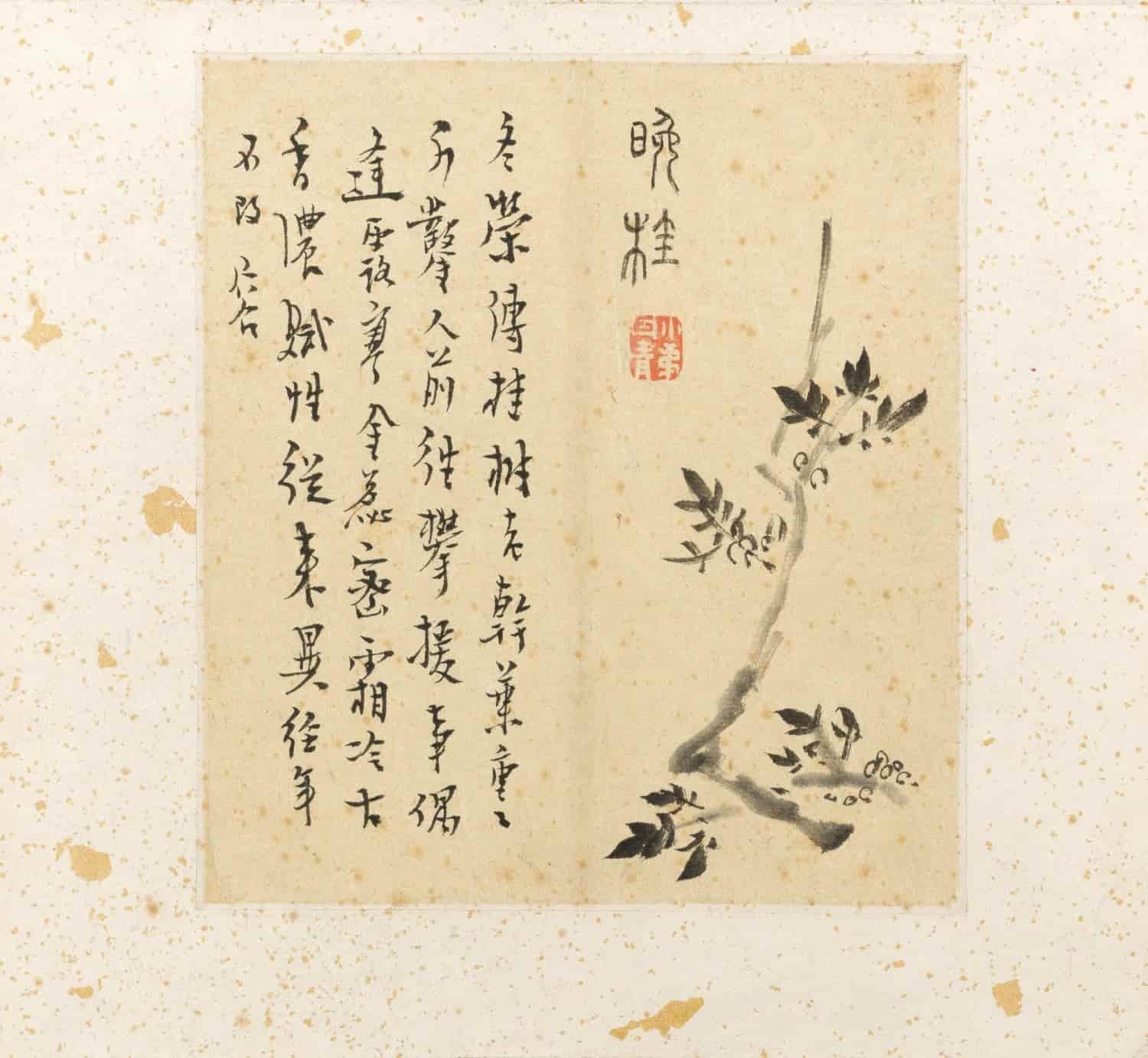
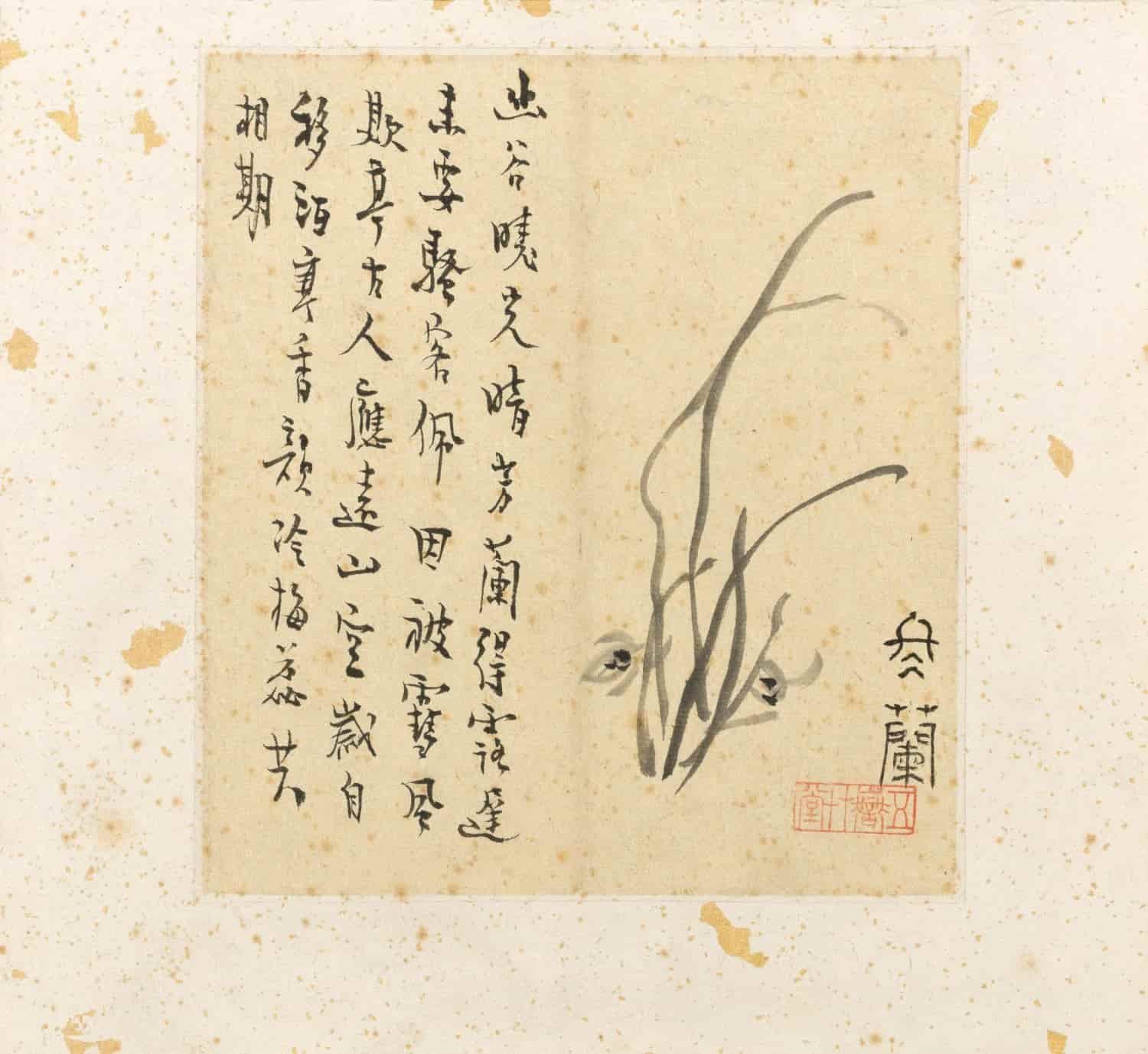
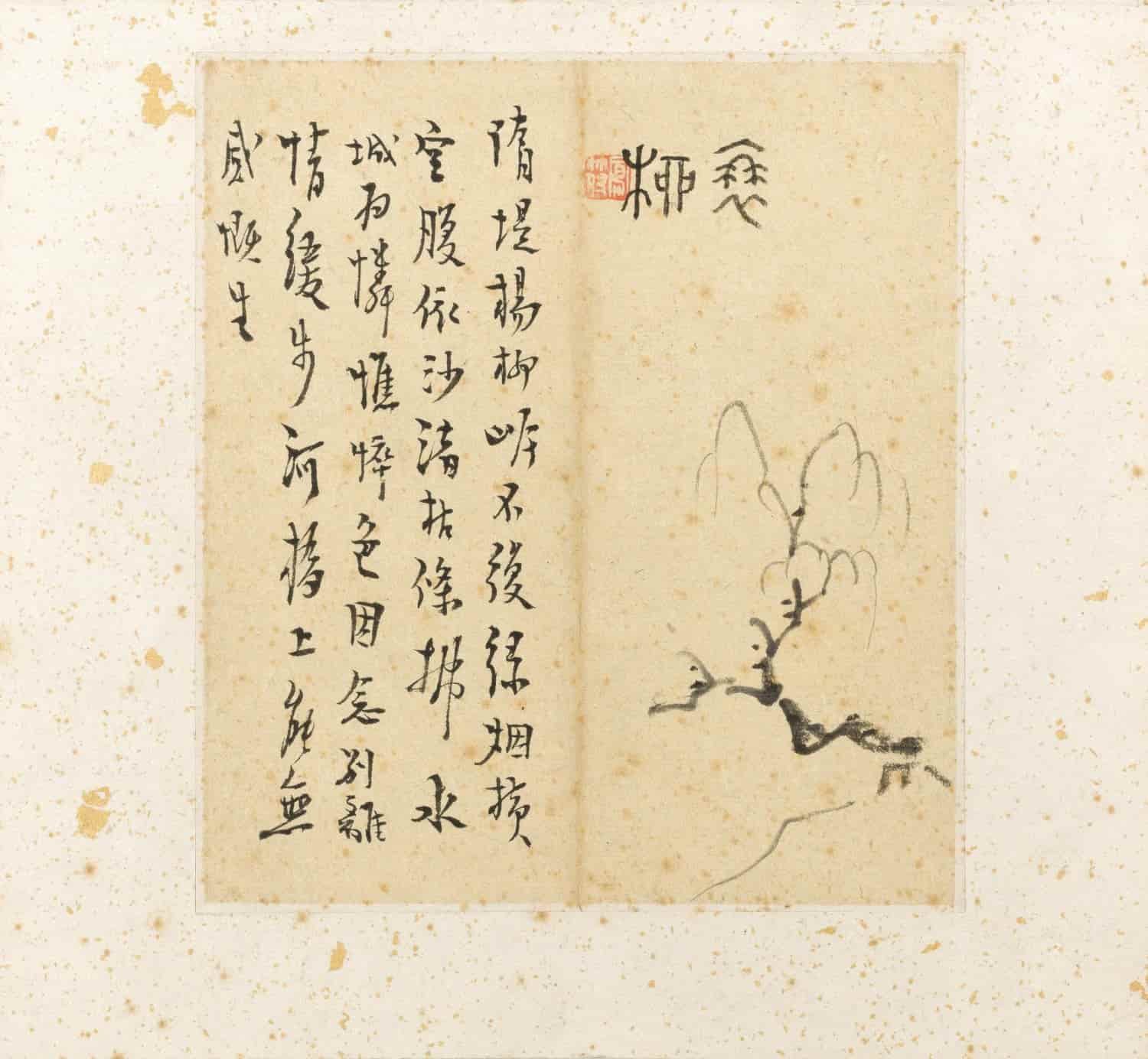
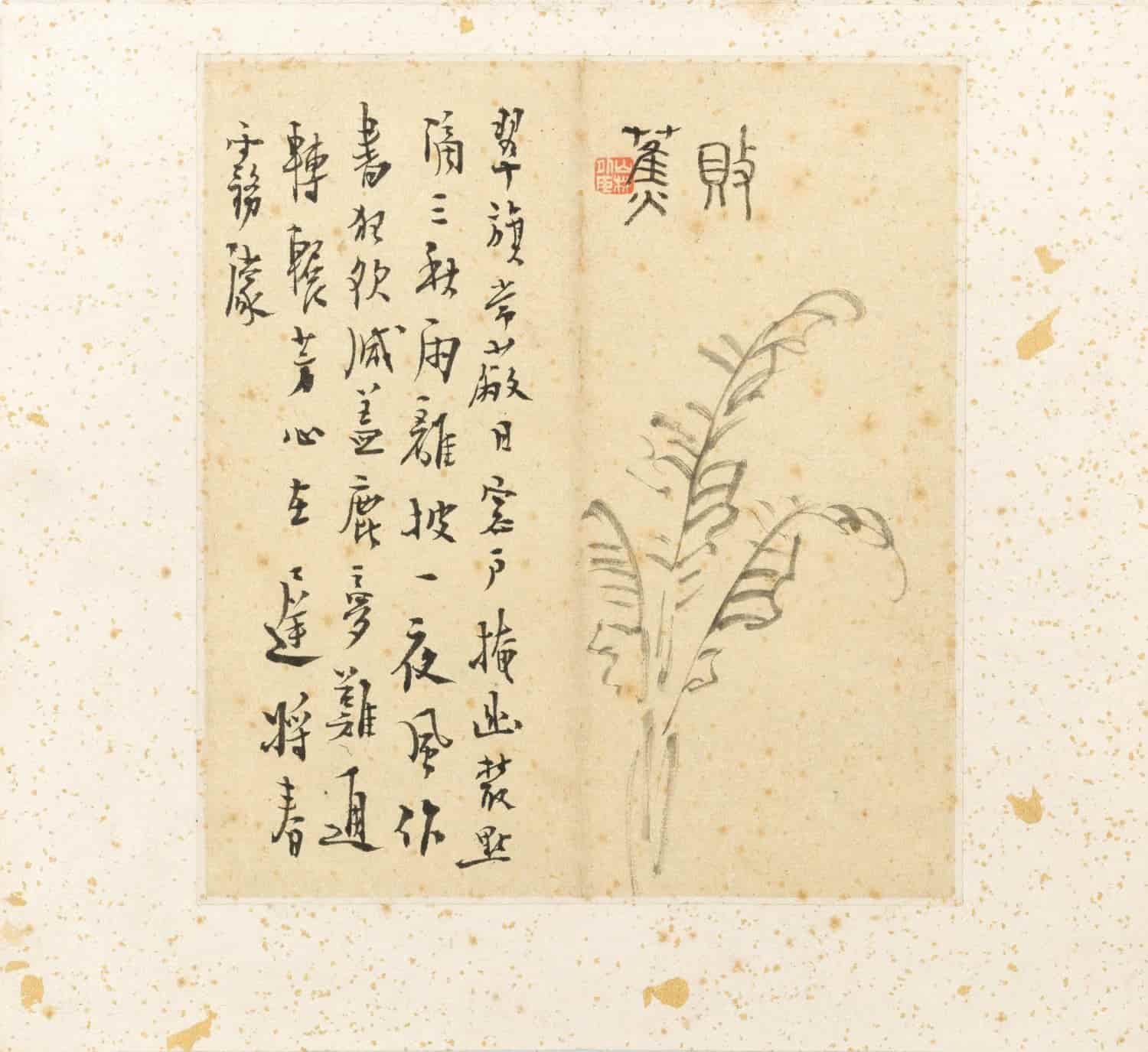
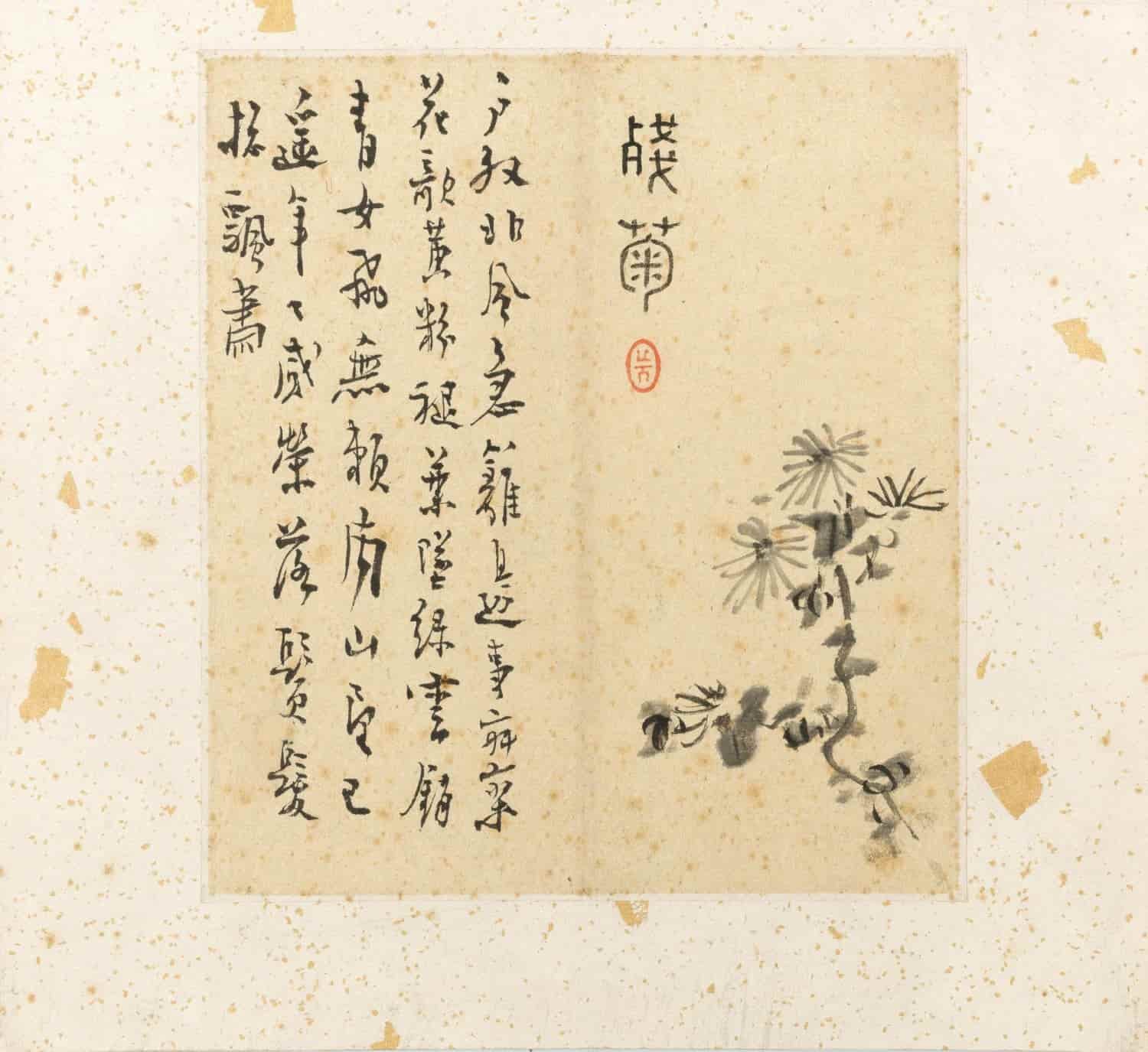
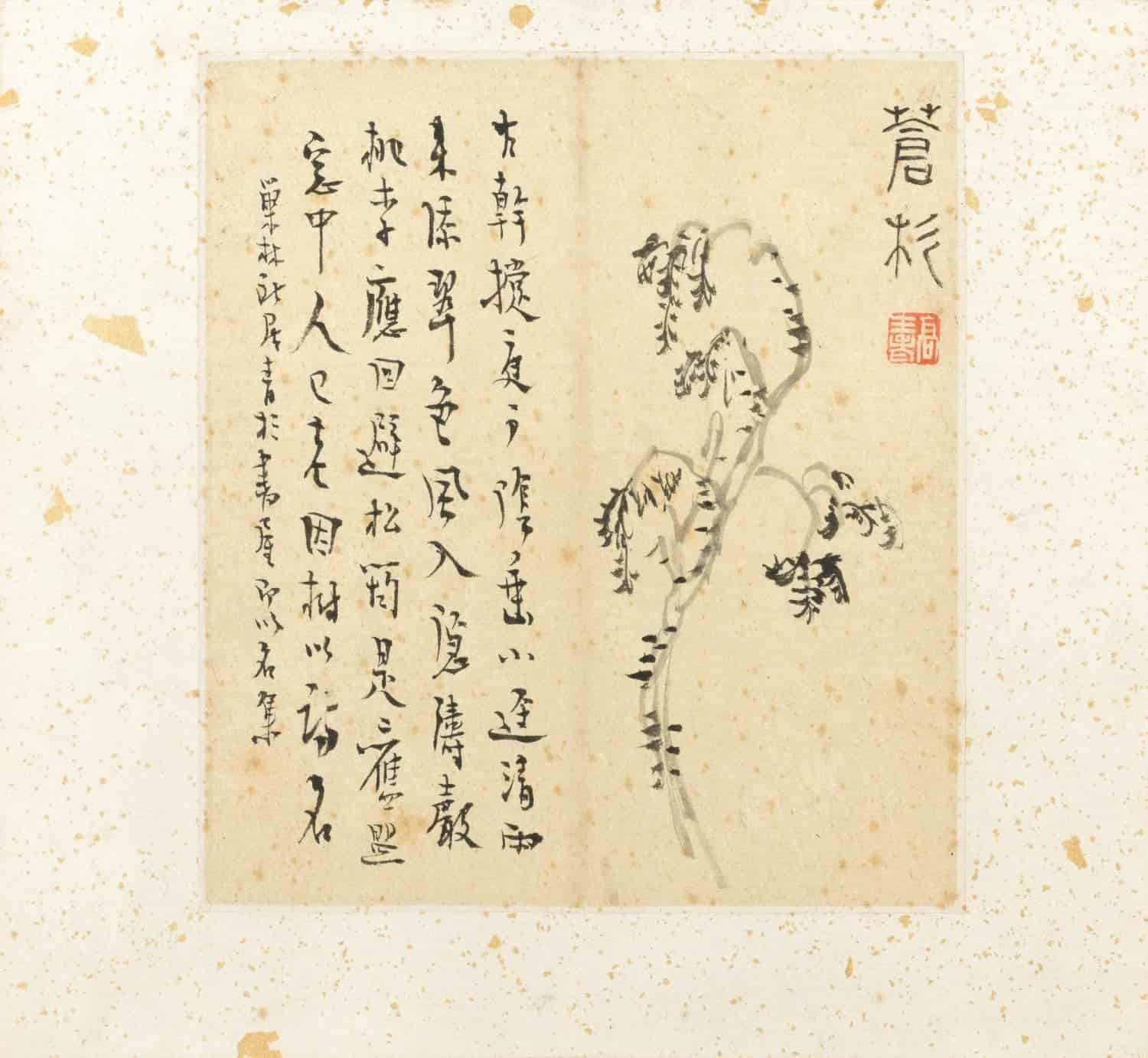
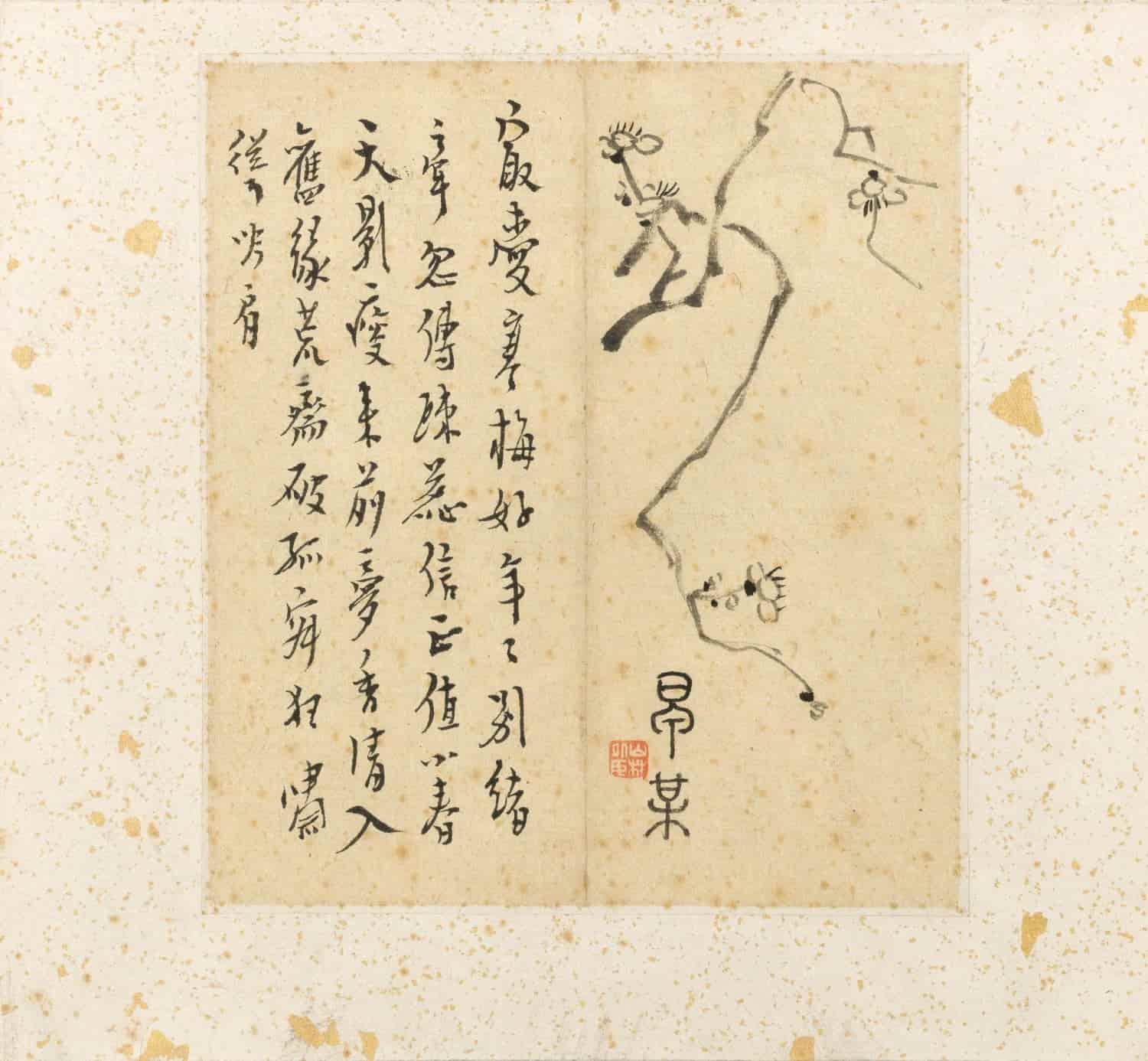
评价
目前还没有评价